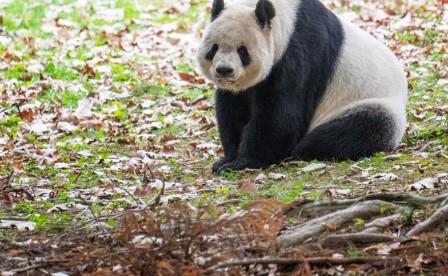Where Do Pandas Live?
Giant pandas (Ailuropoda melanoleuca) are captivating creatures that inhabit specific regions in China. Here are some key points about their habitat:
- Natural Range: Giant pandas were once widespread throughout southern and eastern China, as well as neighboring Myanmar and northern Vietnam. However, due to expanding human populations and development, their range has significantly diminished.
- Current Distribution: Today, giant pandas are restricted to around 20 isolated patches of bamboo forest in six mountain ranges within China’s Sichuan, Shaanxi, and Gansu provinces. These mountainous regions provide the ideal environment for pandas to thrive.
- Mountain Habitats: Pandas primarily live in temperate forests high in the mountains of southwest China. The Minshan and Qinling mountains host the greatest number of pandas in the world. Specifically:
- The Minshan mountains are home to approximately 720 pandas, accounting for around 45% of the total wild population.
- The Qinling mountains host about 250 pandas, representing around 20% of the total wild population.
- Bamboo Forests: Pandas subsist almost entirely on bamboo. They inhabit dense bamboo forests, where they find their preferred food source. Unlike other species, pandas do not occupy vast continuous land but instead choose distinct patches of suitable habitat within their limited range.
- Territorial Behavior: Pandas are solitary animals. Males and females prefer to be alone most of the time. During the mating season (which falls between March and May), they come together briefly. Each female has a definite range, and males compete for her attention during this short breeding period. Pandas mark their territories with scent markings, which involve removing bark from trees, urinating on trees, and leaving secretions on tree stumps.
- Conservation Efforts: As an endangered species, pandas face threats from habitat loss and human activities. The Chinese government has established reserves and bamboo corridors to conserve pandas. These efforts create more room for pandas to move around in search of food and breeding mates.
National Zoo Pandas
The Smithsonian’s National Zoo in Washington, D.C., has a rich history with giant pandas. Here are some highlights:
- First Pair: In 1972, the National Zoo became the home for the first pair of giant pandas, Ling-Ling (female) and Hsing-Hsing (male). Over the next 20 years, they produced five cubs.
- Recent Developments: The National Zoo’s longstanding resident pandas, Tian Tian and Mei Xiang, departed D.C. last fall, along with their youngest offspring, Xiao Qi Ji, who was born at the zoo in 2020. After an emotional goodbye, they moved to the China Wildlife Conservation Association.
- New Arrivals: Exciting news! The National Zoo will welcome a new pair of adolescent giant pandas, Bao Li and Qing Bao, by the end of this year. Bao Li, the male, is the offspring of Bao Bao, who was born at the National Zoo in 2013. Qing Bao, the female, was born in China in 2021. Their arrival continues the legacy of panda conservation and research in Washington, D.C..
See Also- Cracker Barrel’s Transformative Journey Under New CEO Julie Felss Masino
